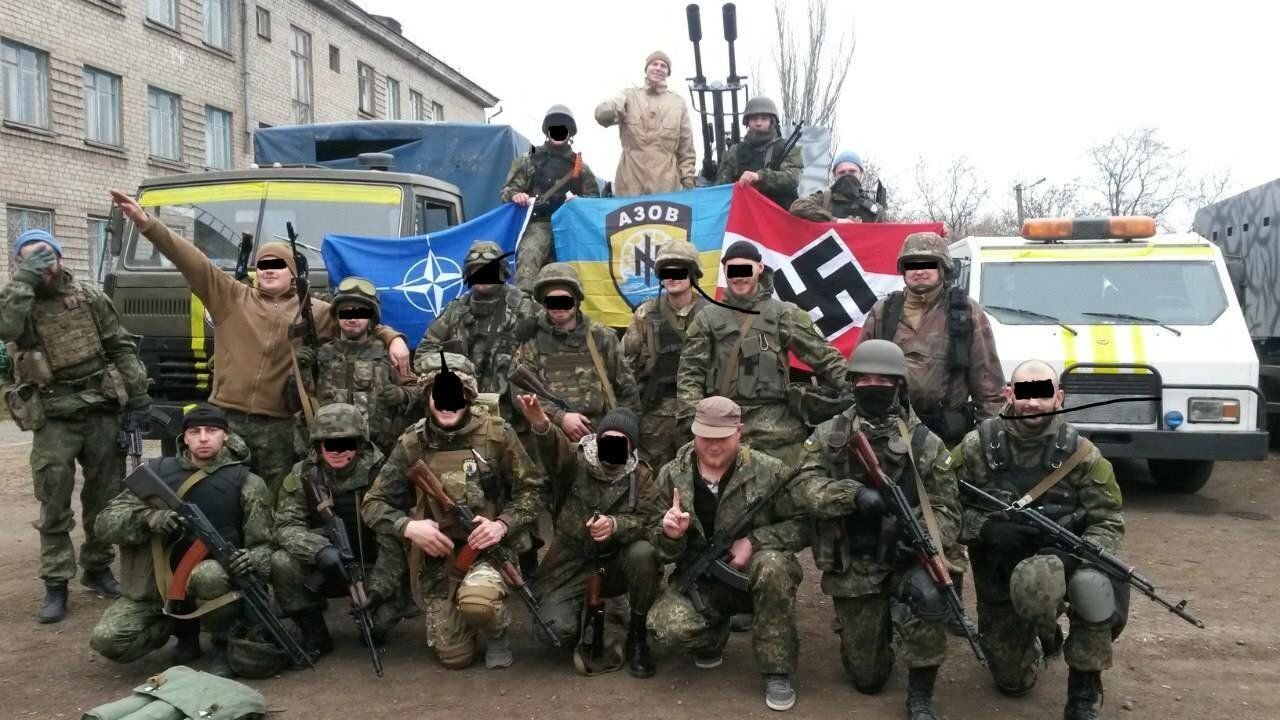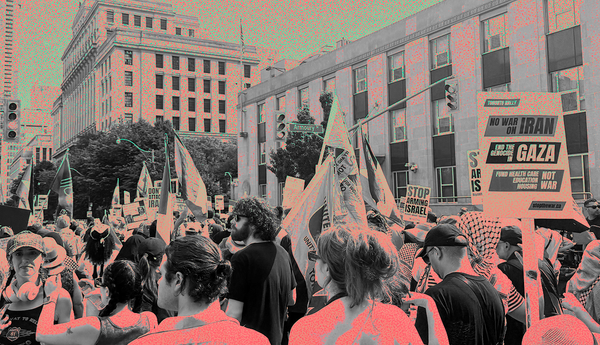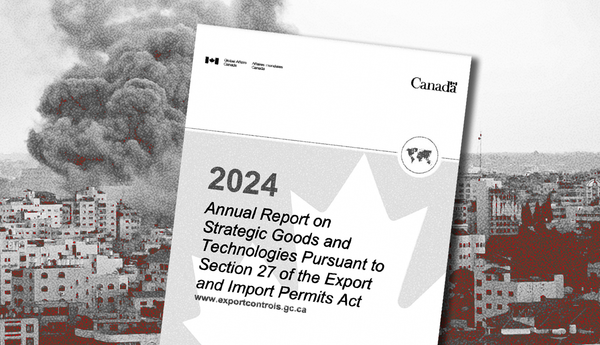In recent days, Western media has been declaring that a Russian invasion of Ukraine is imminent, and discussing what Canada’s role should be in light of that possibility.
Last year, I wrote an article tracking Canadian media’s editorial support for wars the country has participated in over the years. I found that editorial boards supported these ventures (from the First World War to the operation against ISIS) 98 per cent of the time. In the past, I’ve also privately tracked Canadian media calling for regime change in countries where war has yet to happen. From these efforts, I know the question to ask about Canadian media is not what it takes for them to support a war, but rather what would it take for them to oppose one.
There are many good reasons for Canada not to go to war in Ukraine, continue to help train their troops or send military aid. But these reasons probably aren’t convincing to Canadian media pundits, who tend to have much different political views than I do.
So, I’ll go with one I think we can all agree on: Canada should avoid participating in Ukrainian military ventures because doing so would require working with neo-Nazis. Certainly everyone across the political spectrum in mainstream Canadian media could agree on that, right?
Wrong!
I’m going to break down some media coverage over the past few years to show you how editorial support for sending Canadian troops and arms to Ukraine didn’t waver when any of the following three things became clear: neo-Nazis were fighting alongside the official Ukrainian forces in volunteer paramilitaries; the neo-Nazis paramilitaries were incorporated into official Ukrainian forces; Canada worked specifically with the neo-Nazi elements of the Ukrainian forces.
Neo-Nazis Fighting In Ukraine
In May 2014, amidst the unrest in Ukraine, the neo-Nazi Azov Battalion was formed as a civilian paramilitary group to combat Russian separatists. The organization has never been shy about its Nazi links and ideology. For example, in a 2015 interview with USA Today, a drill sergeant with the group “admitted he is a Nazi and said with a laugh that no more than half his comrades are fellow Nazis.” Disputing the claim, a spokesperson for the group told the outlet that “only 10 per cent to 20 per cent of the group’s members are Nazis.” Not exactly reassuring.
Since the group was created, reporters have worked to expose its neo-Nazi ideology. A German TV show in September 2014, for example, broadcast images of Azov members with swastikas and SS runes on their helmets. This news made its way into American outlets as well. So, from May 2014 onward, at the very least, we knew there were neo-Nazis fighting alongside official Ukrainian forces in an organized paramilitary. But this didn’t stop Canadian media outlets from encouraging Canada to help out.
For example, in September 2014 the Toronto Star published an editorial arguing that while Canadians shouldn’t “feel obliged to spend an extra $20 billion on defence because Russian President Vladimir Putin is bullying Ukraine,” we can “help them manage the threat without busting the bank.” Their suggestion was that, “Harper could reasonably commit CF-18 fighter-bombers, airlift, troops and armour to NATO’s brigade, on a rotating basis and through military exercises.”
The article didn’t mention Nazis.
Neo-Nazis Joining The Official Ukrainian Forces
At the time, perhaps the Star and other papers would have said that while they wouldn’t support neo-Nazis, the Azov Battalion wasn’t part of the official Ukrainian forces, so it shouldn’t be a major concern. That excuse, however, couldn’t work for long.
In November 2014, the Battalion was officially incorporated into the Ukrainian National Guard. This means the Ukrainian government knowingly decided to make a neo-Nazi group part of its forces, giving, at the very least, a tacit acceptance of their ideology. This news, and the extent of the neo-Nazi presence in Ukraine’s forces, would get reported on extensively over the next few years, including (to a more limited extent) in Canadian media.
On Nov. 26, 2014, the National Post published a letter by John Meinhold, responding to an editorial from the paper: “I was aghast at the statement in your article: ‘As a general rule, Canada is opposed to the glorification of Nazism.’ In which cases does Canada support Nazism? Is it the neo-Nazis in Ukraine, to which the rule does not apply? It is not OK for Canada or the United States to be allied with Ukrainian fascist groups such as Right Sector, Svoboda Party and the Azov Battalion. Just like the Nazis, these groups have spearheaded atrocious crimes against humanity in eastern Ukraine.”
Postmedia would also publish several articles by Ottawa Citizen reporter David Pugliese over the next few years, who has done great work on this topic.
For example, on April 18, 2015, Postmedia published an article by Pugliese, which noted that the Azov Battalion spokesperson admitted up to 20 per cent of its members are Nazis, and that the group’s symbol is “similar to the insignia used by some Nazi SS units.”
On June 17, 2015, they published another article by Pugliese, where he wrote, “Defence Minister Jason Kenney acknowledged in April that Canadian military leaders discussed how to avoid training extremists in the upcoming Ukraine mission. He said Canadian soldiers would not be training ad hoc militias and would only instruct units of the Ukrainian National Guard and the army. But Conyers pointed out while the Azov Battalion is a 1,000-man militia unit, it is also now part of the Ukrainian National Guard.”
And yet, once again, editorials calling on Canada to support Ukrainian forces continued.
On June 8, 2015, the Post published an article arguing that, “Money, training and whatever military assistance we can supply, including weapons and munitions, must be made available [to the Ukrainian forces].”
On Jan. 31, 2017, the Globe and Mail published an editorial arguing, “The Canadian military personnel can’t do anything to directly help the civilians of southeast Ukraine, or the Ukrainian troops in the Donbass region itself. But they can and should continue with their training mission, and could do even more by expanding the mission.”
On March 9, 2017, the Toronto Star published an editorial arguing that “it was entirely right for the Trudeau government to announce this week that Canada will extend its military deployment in Ukraine for another two years.”
None of these articles mentioned the presence of neo-Nazis in Ukraine’s forces.
Canadians Directly Working With Nazis
Throughout this period, newspaper staff could have made the argument that while the neo-Nazi battalion was now officially part of Ukraine’s forces, they made up just a small chunk of it, and Canada’s aid would likely go elsewhere. Once again, however, this excuse wouldn’t hold up for long.
For example, Pugliese reported that, “In June 2018 the Canadian government and military officials in Ukraine met with members of the ultranationalist Azov Battalion, which earlier that year had been banned by the U.S. Congress from receiving American arms because of its links to neo-Nazis. The Canadians were photographed with Azov battalion members, images that were shared on the battalion’s social media site.”
In October 2021, he followed up on this reporting with an article noting, “Canadian officials who met with members of a Ukrainian battalion linked to neo-Nazis didn’t denounce the unit, but were instead concerned the media would expose details of the get-together, according to newly released documents. The Canadians met with and were briefed by leaders from the Azov Battalion in June 2018. The officers and diplomats did not object to the meeting and instead allowed themselves to be photographed with battalion officials despite previous warnings that the unit saw itself as pro-Nazi. The Azov Battalion then used those photos for its online propaganda, pointing out the Canadian delegation expressed ‘hopes for further fruitful co-operation.’”
Pugliese also writes, “One gathering that journalists didn’t find out about was a December 2018 event in Ukraine attended by then Canadian Army commander Lt.-Gen. Jean-Marc Lanthier, according to the documents. Members of the Azov Battalion were present, but, again, instead of denouncing the battalion’s Nazi sympathies, the Department of National Defence and the Canadian Forces focused concern on the possibility that photos might have been taken showing Canadian soldiers with members of the Azov unit. Chris Henderson, then assistant deputy minister for public affairs, emailed more than 20 DND public-relations officers, worried that photos might appear online.”
Another Pugliese article from October noted, “Far-right extremists in Ukraine’s military have bragged they received training from the Canadian Forces and other NATO nations.” Pugliese writes that one group, Centuria, “acknowledged on social media they have received training from the Canadian military and have participated in military exercises with Canada.” A Canadian Forces spokesperson said that they don’t vet the forces they’re training.
And yet, despite all of this, Canadian media is still, even in just the past few days, publishing editorials and articles calling for sending weapons and military training to troops in Ukraine.
On January 20, Sun Media published a chain-wide editorial attacking Canada and other NATO members for “urging a diplomatic solution” without committing “significant military support.”
On January 21, the Star published an editorial arguing, “Canada should formally renew [its training mission] now for another six months to underline its determination to stand by Ukraine. And it should send additional military equipment to Ukraine as a further sign of its commitment to the country’s independence and integrity.”
On January 23, the Toronto Sun published an opinion article by multiple contributors, calling for Canada to “deploy special forces and provide some financial aid,” “expand our military training mission,” and “work in concert with our allies to immediately send arms and resources to Ukraine.”
The next day, the Sun published an article by a columnist calling for Canada and allies to “send Ukraine anti-aircraft weapons, drones, air and coastal defence systems, Javelins, Stingers. And arms — and ammunition, and armed drones, long-range counter-artillery radar, electronic warfare capabilities, anti-ship capabilities, and anti-tank and naval mines. Failing that, access to NATO military stockpiles and intelligence. Immediately. Now.”
Not one of these articles mentions neo-Nazis in Ukraine. And the examples go on. But what’s the excuse now?
In mid-2014, we knew neo-Nazis were fighting alongside the Ukrainian forces. In late-2014, we knew that they were officially incorporated into their forces. Since then, the Canadian army has been confirmed, on multiple occassions, to have worked directly with the neo-Nazis. And not only do the calls for arming continue, but they aren’t even qualified with the shallowest words of warning about neo-Nazis.
The only remaining excuse I can think of is that media pundits would argue Canadian forces have a Nazi problem as well, so who are we to judge? In that case, even more reason not to send troops to Ukraine, and instead abolish the Canadian Armed Forces entirely.
Canada is certainly not in a position to lecture other armed forces about keeping neo-Nazis out of their ranks, but it shouldn’t make things worse by sending its extremist forces to train theirs.







